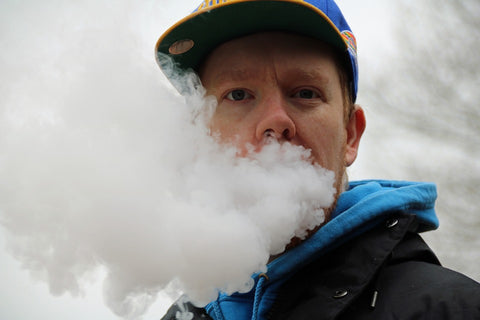Weed Breathalyzers: Do they work?

A lot of good and bad happened in the 2010s for loose leaf. Several states legalized cannabis, so much so that 33 states in the country have either recreational or medicinal marijuana available and legal, with the entire west coast having legal pot.
We’ve made strides in research but we’ve also been unable to keep up with awareness for some of the negative effects of dry herb and also had a Supreme Court Justice who wanted to curb the independent right of states to legalize because of his personal vendetta and hate for the plant.
In all this chaos, there’s something that’s come up that’s rather confusing in whether it’s a good or a bad thing. A few scientists unveiled a weed breathalyzer a few months ago to help law enforcement better understand driving under the influence of cannabis.
In the few states and countries where loose-leaf is legal, there are concrete laws regarding how much THC one can have in their blood, which is measured by the number of nanograms of THC present in one’s blood (per ml). Most of these states and countries seem to agree on 5 nanograms of THC per ML but there’s a deviation from this threshold.

More importantly, however, we must understand that this is a nuanced issue that can’t really be treated as being similar to alcohol, which is much easier to understand.
But what makes cannabis so special, right?
Both alcohol and cannabis are stimulants and alter the state of your mind and sometimes the body, so it should be easy to understand?
Not really, which is why cops are increasingly using impairment tests on the road instead of solely relying on the tests and their results. We’ll look at why.
What a weed breathalyzer is and why they won’t work on their own
Similar to breathalyzers for alcohol, weed breathalyzers work on the principle of trying to figure out how much THC is in your body from your breath. You blow into the breathalyzer and it measures the THC amount. It’s the only THC since that’s the only psychoactive compound of loose leaf.
Around $30 million was poured into its research and development over a five year period and it is close to being “market-ready”.
But does this make sense?
Unlike alcohol which leaves our system in a few hours, THC remains in the bloodstream for weeks on end and therefore can be in your breath even a few days after your last toke, and you’re definitely not going to be high a week after a session.
While the current developments in technology are supposedly going to help identify current THC levels, even that may not be helpful in understanding just how stoned a person will be. This was confirmed by the researcher responsible for developing the breathalyzer, Ervin Sejdic. When asked, “Is there a ratio that links the amount of THC in someone's breath to the amount in the person's blood — and then to exactly how stoned that person is?”, Sejdic replied saying “No, the correlation is basically missing, from a scientific point of view."

Despite $30 Million in funding and 5 years of research, there’s no correlation that the amount of THC in one’s blood is an indicator of how high a person is, defeating the breathalyzer’s purpose
Then why develop a breathalyzer? Because a weed breathalyzer isn’t meant to be used as a standalone benchmarking gadget but as a guide for cops on the road for when they perform a sobriety test that includes different exercises that’ll allow law enforcement to understand just how intoxicated a person is.
But does that matter? Perhaps not. In Canada and Colorado, the legal limit for driving under the influence is 5 nanograms of THC per ml of blood, give or take. So in theory, you could have had some loose leaf a few hours before and not be charged. However, with how differently each person consumes marijuana, it’s really difficult to grasp how this would be implemented.

People could be really stoned and unable to drive while being well under the legal limit or not be stoned at all, feel file and still be over the limit, which makes enforcing DUI’s for pot hard
The inverse can be true as well: where someone who doesn’t feel high has more THC in their system. Of course, we get that the entire point of these exercises is to paint that an on-field blood test or breathalyzer isn’t enough, there’s so much room for messing things up or intentional misuse and application that the entire process can become a nightmare for both law enforcement and citizens.
THC affects people’s motor skills and perceptions differently for different people, much like how people use THC for treating anxiety but it’s also one of the more common side effects: there isn’t a uniform answer when it comes to cannabis, we’ve known this for a while now.
However, it’s understandable that law enforcement is trying to curb instances of driving with driving high being on the rise and being more or less as risky as driving drunk.
But does that mean that we should have an unreliable and inefficient system in place that helps neither law enforcement nor the civilians on the road?
Unfortunately, there doesn’t seem to be any other alternative: we need to have checks in place despite their problems. However, it seems like in the process of streamlining them, we might just end up with a longer list of issues to launder than before we started. Hopefully, we don’t get into that situation any time soon.


